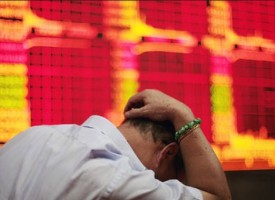The price of gold is continuing to surge and the massive upside breakout now has the Metal of Kings approaching the $2,000 level.
Gold Bullion Breaks Out on Safe-Haven Flight
March 4 (King World News) – Paul Wong, Market Strategist at Sprott Asset Management: The precious metals complex rebounded strongly in February as other markets faltered. Gold bullion is up 4.36% YTD through February 28, 2022, and silver bullion has increased 4.90%. Gold mining equities rallied strongly and gained 10.17% YTD. This compares to a decline of 8.23% for the S&P 500 TR Index and losses in bond markets.
February Recap
Spot gold rose $111.82, or 6.22%, to close February at $1,908.99, the highest month-end price since August 2020. February was a risk-off month for most assets except for precious metals and commodities. Rising hawkish expectations from the U.S. Federal Reserve (“Fed”) triggered higher yields across the curve, with the 2-year Treasury yield spiking to a high of 1.60%, while the 10-year Treasury yield soared to a high of 2.04%. Higher yields, worsening inflation, a hawkish Fed, and the Russia-Ukraine conflict resulted in the S&P 500 Index declining 8.23% YTD, the worst two-month start to a year since 2009. In addition to declining macroeconomic factors, low liquidity conditions in U.S. equities coupled with short delta and gamma positioning have led to suddenly elevated volatility to the upside and downside. Bonds continued to lose ground, falling only 0.66% as measured by the U.S. Treasury Index. Some last moment safe-haven bids from the Russia-Ukraine conflict prevented another significantly down month for the bond market.
Gold Breaks Out as Safe-Haven Effects Take Hold
After consolidating in a year and a half long bullish flag pattern, gold bullion broke out of its trade range sparked by the Russia-Ukraine conflict (Figure 1). Gold has reached a closing high of $1,909 thus far in 2022, with the technical charts showing next resistance at the $1,960-1,965 level before a retest of 2020 highs. Our Bullion Positioning index has turned higher as all sources of gold buying we track increased. Silver had a sharp snapback in February, rising 8.83% to return to the midpoint of its long trading range. As measured by the GDX, gold equities had a more pronounced move, gaining 13.73% from very oversold levels. The relative performance of gold mining equities versus the S&P 500 increased 16.87%, the best relative monthly return since April 2020.
As expected, the traditional 60/40 balanced fund is not providing the portfolio hedge it has in the past. With the inverse correlation between bonds and equities having ended, both have now fallen two months in a row. The last time both bonds and equity returns were negative for two months to start the year was early 2009. We have argued that gold would be sought as a safe-haven asset for multi-asset portfolios without an effective hedge. Figure 2 below highlights the inverse correlation of gold bullion to the S&P 500 (the S&P 500 is plotted with an inverted axis). The bottom panel is a rolling 20-day correlation between gold and the S&P 500 with a -0.87 reading at month-end, a very high inverse correlation (or effective hedge). For comparisons, U.S. Treasuries had a positive 20-day correlation of 0.44 versus the S&P 500 (not a hedge, and not even low correlation). So far, in 2022’s volatile markets, gold has been fulfilling its function.
We continue to see gold in demand as a safe-haven asset, given we are still in the early days of the Russia-Ukraine conflict, which has considerable potential for a worsening risk outcome. There was a substantial increase in option hedges (long puts) over several weeks before the Russian-Ukraine conflict began. Most of those options were short-term due to the overall macro volatility at the time. When very short-dated put options work, they need to be monetized quickly (due to rapidly changing deltas), which led to short-covering action at month-end. With volatility now increasing (the VIX closed at 30.15 at month-end), options are now very costly. Given the very high inverse correlation of gold to equities (see Figure 2) and gold bullion volatility trading at ~2/3 times the cost of equity and gold volatility trades with a positive skew (volatility rises with price), gold safe-haven flows may likely continue.
The Fed Will Not Buffer Risk for Now
In the post-GFC (global financial crisis) world through 2021, there was a subdued inflation environment where PCE (Personal Consumption Expenditures price index) was below 2% most of the time. The main risk was Japan-style deflation, which led to pro-market policies. Fed forward guidance became predictably market-friendly, and policy was pro-risk to try and achieve 2% GDP (gross domestic product) growth. Market-friendly low interest rates and the near implicit guarantee rate would remain low, resulting in a low volatility market environment.
When the COVID-19 pandemic initially hit, the first fear was a deflationary threat as consumer demand plunged, debt soared and central banks unleashed the most dovish monetary response ever. But in time, the disinflationary impulses became inflationary as global supply chains were cut, COVID waves caused further disruptions, massive fiscal stimulus packages were created and severe labor shortages developed. It is now almost two years since COVID first hit, and the distortions, convulsions, and frictions related to inflation have not moderated.
The latest inflation readings remain higher than expected, show no signs of abatement and the Fed’s troubles are mounting as inflation pushes out further past its target. Forward guidance from the Fed is fading and the Fed is giving itself more significant optionality (i.e., the ability to change pace, more vague language, flexibility) as macroeconomic volatility increases. The Fed, which is the most substantial and predictable force for low volatility, is unavailable to buffer market stress until a shock event forces its hands.
The Russia-Ukraine Conflict
Geopolitics is challenging to price with any reasonable level of accuracy. From the vantage point of financial markets, the West is attempting to engineer a liquidity squeeze/crisis, runaway inflation and a deep recession in Russia by cutting off Russia from global capital markets. Russia will need to deploy its considerable FX (foreign exchange) reserves (~$630 billion) if it can somehow bypass the sanctions, hike interest rates, employ capital controls, etc., to avoid its currency (the ruble) and banking system from collapsing. An effort is underway to target the Central Bank of the Russian Federation to prevent it from deploying its massive FX reserves to blunt sanctions and shore up the ruble. If the sanctions are successful, we will see substantial bank runs, a drain on reserves, a ruble crash/dollarization or a complete financial system collapse. YTD 2022, the ruble has fallen more than 31% in value, and overnight interest rates are now 20% (Figure 3).
Russia, in turn, is a notable provider of liquidity to the Eurodollar market and FX swap books, estimated to be around $200 billion. Furthermore, Russia holds claims on foreign banks of $300 billion. Removing that level of liquidity from the Eurodollar funding markets and creating an outflow of operating deposits from Western banks will exacerbate the emerging credit stress. Russian assets in Western bank balance sheets will likely become uninvestable and untradeable, resulting in mark-to-market drawdowns. Any Russian asset used as collateral will be marked to zero or near-zero, leading to loan impairments and possible defaults. Further escalation may see liquidity stress developing from the FX swap market and other interest rate fixes, broadening out from there. There will be collateral damage and possible contagion, a significant blowback on the Western financial system and capital markets, and likely other unintended consequences. This situation is another major source of rising risk for funding markets, banking liquidity and credit markets, as well as higher volatility for capital markets. Should the existing conflict spread to a NATO-Russia military debacle, the potential risk outcome jumps to an entirely higher level.
Russia’s Massive Gold Holdings
Reported Russian gold holdings are 73.9 million ounces, currently worth US$132.3 billion (Figure 4). The question now is, can this gold be converted to USD, thereby bypassing the sanctions on the Central Bank of the Russian Federation? Russia has a reported $630 billion in FX reserves which are now essentially frozen out of the global banking system. In the banking system, gold is classified as “outside money”; it exists outside of the claims of other depositors/creditors in the banking system. The common refrain of “gold is no one’s liability” helps illustrate this point. As such, in theory, Russian gold can be pledged under a repurchase operation (repo) to cover its U.S. dollar (USD) requirements. However, that would require a willing central bank of sufficient size, collateral rich in U.S. Treasuries and gold (preferably), that is ready to risk the ire of the world. We believe the risk is there but is currently remote. It also sounds a bit like “gold-laundering”.
The more considerable risk beyond Russia converting its gold (not just a repo operation) would be a systematic financial system crisis leading to a repeat of credit liquidity freezing similar to what occurred during the Lehman Bankruptcy Crisis of 2008 and during the March 2020 COVID market crisis. Gold becomes the only liquid immediately fungible asset (no one’s liability, so no counterparty risk). There is an initial short-lived price drop as desperate sellers sell gold for U.S. dollar liquidity. Once system liquidity unfreezes, what follows is a massive demand for gold as “outside money” (no one’s liability) becomes a coveted bank asset in a world awash in credit and liquidity risk. By this time, central banks will be on their way to launching massive QE (quantitative easing) programs, USD swap lines and other liquidity facilities. In turn, interest rates will fall (especially real yields), the money supply will explode higher along with debt and there will be a concerted effort to bring the U.S. dollar lower — all the basic building blocks of a gold bullion bull market.
Stagflation Tail Risk Building
One of the main areas of collateral damage from the Russia-Ukraine conflict will be higher prices via the commodities channel. Russia is a significant exporter of many commodities and is one of the world’s largest energy producers, accounting for 13.5% of global fuel exports. For Europe, the numbers are hostage-level large, with Russia accounting for 40% of the European Union’s natural gas supply and a third of its crude oil imports. Brent oil is trading well above US$100 per barrel, the highest price since 2014 and scarcity premiums are being revised higher. Russia is the fourth-largest wheat exporter and, together with Ukraine, represents 25% of the wheat export market. Ukraine is also a notable corn exporter, accounting for 13% of world exports. Russia is also the world’s largest fertilizer exporter, further compounding grain price pressures. Agriculture futures markets were already heading towards multi-year highs well before the Russia-Ukraine conflict.
The sharp rise in energy and food prices is an outright risk for a stagflationary environment. Figure 5 highlights the sharp rise in commodity pricing. Since the 2020 lows, the Bloomberg Commodity Index (BCOM) has increased more than 100%. Thus far, in 2022 YTD, the BCOM Grains Index is up 19% and the BCOM Energy Index is up 27%, with additional risk to the upside. The potential for a staggering commodity squeeze higher is possible as the conflict continues, but this may be tempered longer-term because Russia now desperately needs U.S. dollars. The only viable and significant enough source of U.S. dollars for Russia is energy exports. For this reason, an energy embargo on Russia to finally end the Putin regime likely grows, but the risks are commensurate. Eventually, the price surge in commodities will lead to demand destruction and stagflation fears before giving way to another problem: a growth scare.
Inflation to Stagflation to Growth Scare
Policy risk should not be underestimated when debt-to-GDP is at ~122% (the highest since WWII) and all manner of embedded duration risk across virtually all asset classes. But with the market’s recent near-total fixation on inflation, we suspect the market will shift to worrying about stagflation and growth due to the Russia-Ukraine shock event. Growth had already started to slow at the beginning of the tightening cycle, a rare occurrence made more troubling by the planned aggressive hawkish Fed action. The yield curve continues to flatten dramatically and has been consistent with the message of a Fed policy mistake. Figure 6 is an example of what we see as growth expectations at risk. The forecast for U.S. GDP for Q1 2022 (black line) has been free-falling since early January, but the forecast for U.S. GDP for the year 2022 (blue line) has barely budged. The read-through is that the factors causing the slowdown for Q1 are, ahem, “transitory”, and the weak Q1 growth will be recouped in the next three quarters. We expect further disappointments and risks to U.S. economic growth and earnings growth to increase in the near to medium term.
Credit Flashing the Warning Lights
We continue to see substantial outflows from high-yield and investment-grade bonds. Credit spreads and credit default swaps are now turning up, indicating higher credit risk. As seen in Figure 7, credit risk has mean-reverting qualities, meaning spreads may widen quickly as fear becomes the primary driver. With corporate-debt-to-GDP at 0.49, the upper end of debt leverage over the past 30 years, rising rates and the lack of Fed support (until the next crisis perhaps), increasing credit risk will significantly add to (if not tip over) market risk. Furthermore, when combined with terrible market liquidity and high volatility, this becomes a toxic blend for risk assets.
As Risk Rises, Safe-Haven Demand is Likely to Follow
Last month’s 2022 Top 10 Watch List highlighted the lack of support for risk assets as virtually all primary monetary and fiscal liquidity sources would be fading. Combined with a hawkish Fed and other central banks raising interest rates and shrinking QE programs, the foundational support for risk assets weakens further. But factoring in the most severe military conflict in Europe since WWII, combined with risk to systematic liquidity and financial system stress, disruption to critical commodities, the question becomes how long lasting is the increase in risk/stress/volatility? We are only days into the Russia-Ukraine conflict, and the risk profile for risk assets has already changed considerably both in magnitude and in duration.
The odds that the scale and extent of the sanctions on Russia not leading eventually to some form of elevated stress event, either in the financial system or the geopolitical sphere, seems unlikely or impossible to ignore. Too many inter-related risk channels can spill over into risk assets and metastasize. By no means is this a complete list but all are significant: Fed policy mistake, higher commodities resulting in higher inflation/stagflation, SWIFT sanctions impacting the funding markets, impairment/defaults related to Russia increasing default risks, energy embargo disrupting energy markets and the escalation to a NATO-Russia military conflict.
More than ever, we continue to emphasize the importance of gold as a safe-haven asset for portfolios.
© 2022 by King World News®. All Rights Reserved. This material may not be published, broadcast, rewritten, or redistributed. However, linking directly to the articles is permitted and encouraged.














